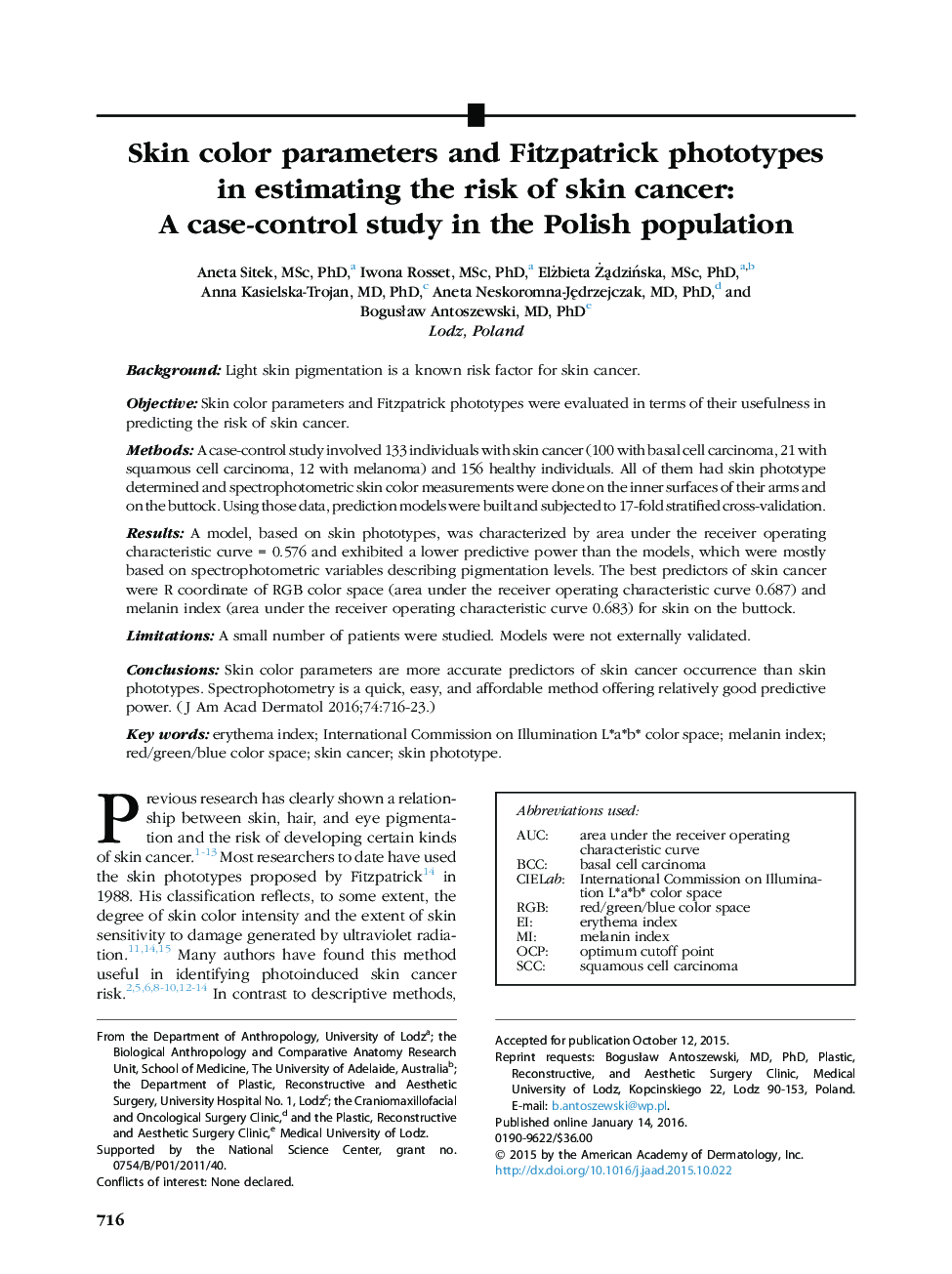| Article ID | Journal | Published Year | Pages | File Type |
|---|---|---|---|---|
| 3204532 | Journal of the American Academy of Dermatology | 2016 | 8 Pages |
BackgroundLight skin pigmentation is a known risk factor for skin cancer.ObjectiveSkin color parameters and Fitzpatrick phototypes were evaluated in terms of their usefulness in predicting the risk of skin cancer.MethodsA case-control study involved 133 individuals with skin cancer (100 with basal cell carcinoma, 21 with squamous cell carcinoma, 12 with melanoma) and 156 healthy individuals. All of them had skin phototype determined and spectrophotometric skin color measurements were done on the inner surfaces of their arms and on the buttock. Using those data, prediction models were built and subjected to 17-fold stratified cross-validation.ResultsA model, based on skin phototypes, was characterized by area under the receiver operating characteristic curve = 0.576 and exhibited a lower predictive power than the models, which were mostly based on spectrophotometric variables describing pigmentation levels. The best predictors of skin cancer were R coordinate of RGB color space (area under the receiver operating characteristic curve 0.687) and melanin index (area under the receiver operating characteristic curve 0.683) for skin on the buttock.LimitationsA small number of patients were studied. Models were not externally validated.ConclusionsSkin color parameters are more accurate predictors of skin cancer occurrence than skin phototypes. Spectrophotometry is a quick, easy, and affordable method offering relatively good predictive power.
